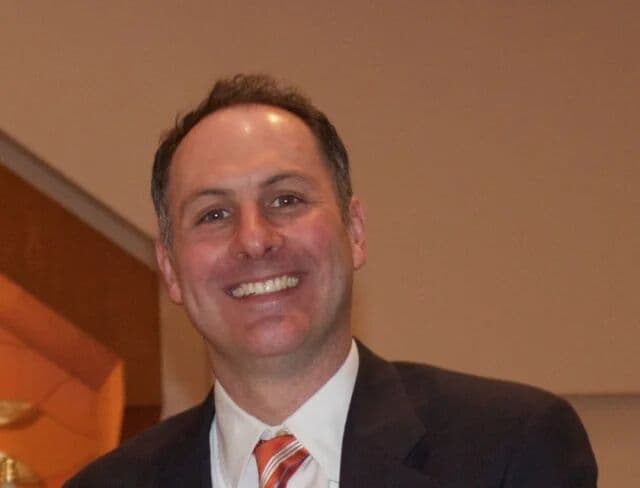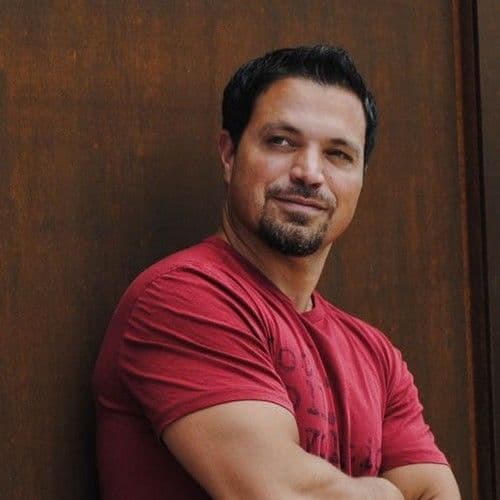How Staying Local Brought Hollywood to Me

How Staying Local Brought Hollywood to Me

“Move to Montana” is not the advice you’ll get when you tell someone you want to break into the entertainment business. Especially if, like me, you were working at one of the biggest magazines in the country owned by a parent company that also ran TV and movie studios. At that job, I interacted with boldface names and their publicists all day and, as a writer, also interviewed Grammy, Tony, Emmy, and Golden Globe winners.
You’d think this would be the place to work if you were an aspiring screenwriter, but after seeing Val Kilmer in the elevator and not saying a word to him, I knew that I had to find a different way into the business. I just didn’t know the road that would take me there would go through Montana.

Glacier National Park - Montana
LOCATION INSPIRATION
Leaving the city, my wife and I moved to Yellowstone National Park, where I worked in a bookstore and, during the mornings and evenings when the shop was dead, I wrote a screenplay inspired by the natural Big Sky terrain, my love of fly fishing and my dad, a Vietnam vet who was battling cancer caused by Agent Orange exposure.
Called Mending The Line, the script told the story of a young Marine who, after being wounded in Afghanistan, comes to a Veterans Affairs hospital in Montana. There he meets a damaged Vietnam vet who teaches him fly fishing as means of helping him cope with his physical and mental trauma.
Reaching back to New York, I sent the script to a director I knew through alumni contacts. He liked the script and optioned it but was never able to find financing. Success on the Black List website for a TV pilot I wrote brought the script to the attention of an actor and his managers, who optioned it. But with no money, the project never got off the ground.

Yellowstone National Park
EMBRACE YOUR PLACE
With no other real connections to LA and NY, I contacted a producer I found on IMDB who lived in Montana and had shot multiple projects here. After reading the script, she introduced me to Allison Whitmer, the Montana Film Commissioner, and encouraged me to apply for the Big Sky Film Grant.
Administered by the Montana Film Office and Department of Commerce, the grant is a monetary award to projects that will bring jobs to the state and, in some way, represent Montana’s people, places, and culture. To qualify, a production must feature at least 50% of principal photography in Montana and have a Montana spend of $350,000 (or more).
Allison talked me through the application process and also introduced me to a line producer to create a budget for the project – a prerequisite for applying for the grant. With the budget, script, and a homemade lookbook, I filled out the online Submittable form and waited. Six months later, I got word that Mending the Line was one of two narrative features to receive money from the state.
OPEN FOR BUSINESS
To accept the grant, I created an LLC for the film. Once that was done, with the money from the grant, I was able to hire a lawyer to draw up the documents (Operating Agreement and Term Sheets) needed to raise money. With those papers in my pocket, I reached out to potential investors and producers – and the grant became my calling card in these cold-call emails.
Saying I was awarded a Big Sky Film Grant served to answer the first two questions anyone who was thinking of putting time into a project asked: “Has someone else deemed this good enough to read?” and “Does it have any money attached?” With answers of “Yes” to both questions, I was soon having conversations with producers and investors who were interested in at least hearing more.

COMMUNITY SUPPORT
One of the first emails I sent was to a local director who had also won a Big Sky Film Grant. Again, with the grant as my introduction, I emailed him, and he wrote back, asking to read the script.
A week later, we were having a beer at the Murray Bar in Livingston, Montana, discussing the ins and outs of getting an independent film made and made in Montana. Not only did he take me under his wing – giving me notes on the script and answering my questions on how to raise money and attach talent – but he also took me to the premiere of his film in Seattle to meet investors.
He was the first of many local filmmakers, crew members, and actors that invited me into the local filmmaking community and gave me the lay of the land in terms of shooting in Montana. Many of these connections would go on to work on or support the production of Mending The Line.
BUILD IT, AND THEY WILL COME (TO MONTANA)
Having constructed the foundation of a production company and with the grant money as my seed capital, rather quickly, the project got off the ground.
First, producer Kelly McKendry came on board, then producer Scott MacLeod joined up. Kelly found director Joshua Caldwell (Infamous), who just so happened to be a passionate fly fisherman. Scott brought in our casting director Neely Eisenstein, the daughter of a Marine who served in Vietnam.
With producer Carl Effenson, who helped finalize our financing and round out the team, we went into production a little over two years after the grant was awarded. With a cast of Brian Cox (Succession), Sinqua Walls (Resort to Love), Wes Studi (Last of the Mohicans), Patricia Heaton (Everybody Loves Raymond), and Perry Mattfeld (In the Dark), we shot 85% of the film in Bozeman and Livingston, Montana, taking advantage of the local scenery, crew base, and state tax incentive.

Hyalite Canyon - Bozeman, Montana
HOMEGROWN GENEROSITY
The grant was my first interaction with the Montana Film Office, which oversees and facilitates all productions that shoot in the state. When we were still finalizing our financing, it was the grant and the film office that helped us with lodging and travel expenses, covering the cost of our director, DP, and line producer’s location scout.
Having already established a relationship with the film office, they were a tremendous resource when we were hiring our crew as well as when it came time to get approved for and apply for the state’s MEDIA Tax Credit, an incentive program that gives film and TV productions a 20 - 35% tax credit on in-state spending.
Community support can be contagious and can be doubly powerful when a project’s content is directly tied to the place it is set. With fly fishing and the military (Montana is top 3 in per capita veteran population by state) integral to Montana’s culture, we partnered with local businesses and non-profit organizations like Warriors & Quiet Waters to receive all manner of financial and in-kind support.
CLOSE TO HOME
Living in Montana, I can tell you it is special in many ways – but the Big Sky Film Grant and Montana Film Office – however integral they were to the production of Mending The Line – are not unique.
Each state (and almost all countries) has film offices and/or grants that promote and support local filmmakers and/or stories set within their borders. I can tell you from experience seeking out these resources can mean the difference between just writing a script and getting it made.
Let's hear your thoughts in the comments below!
Got an idea for a post? Or have you collaborated with Stage 32 members to create a project? We'd love to hear about it. Email Emily at blog@stage32.com, and let's get your post published!
Please help support your fellow Stage 32ers by sharing this on social. Check out the social media buttons at the top to share on Instagram @stage32, Twitter @stage32, Facebook @stage32, and LinkedIn @stage-32.
About the Author

Stephen Camelio
Screenwriter, Producer
I am an award-winning writer, copywriter and former editor at In Style magazine. My writing has appeared in countless publications including ESPN The Magazine, Fly Rod & Reel, Field & Stream, Outside Go, Entertainment Weekly and Men's Journal. Along with previously covering scripts for Goldcrest Fil...




